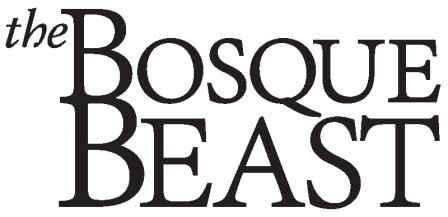Brother Predator
It's an animal that everyone seems to have an opinion about. But who really knows them?

Villainized
since the Middle Ages, wolves are still linked in people’s minds with
hunger and threat—think “wolf at the door,” “thrown to the wolves,”
“wolf something down”—though the animals simply hunt to survive, like
lions and bears.
It doesn’t help that hardly anyone in the United States has personal
experience with wolves in the wild, except at a distance. They are back
from the brink of extinction in the North, but live mostly in remote
wilderness— which isn’t to say that they won’t prey on a sheep (or a
hundred) nearby.
A poster child for victimization, the wolf has become a potent symbol
also for nature-lovers, representing all that has been lost to us with civilization.
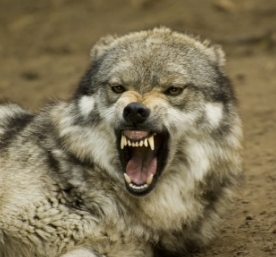
Thus we have “dances with wolves” and “running with
wolves” joining the colloquial imagery. Native myth is often tapped in
this context, since Indian legend—in contrast to Christian
imagery—honors the wolf as a skilled hunter, devoted parent, and loyal
pack member, rather than a bloodthirsty killer.
Ideas from childhood die hard, however, so the common unfounded fear of
wolves has been dubbed the “Little Red Riding Hood syndrome.” When was
the last time you saw a child cuddling a stuffed wolf?
The wolf whisperer
"When humans manipulate nature, nature suffers"
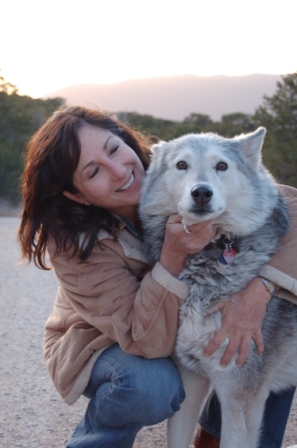 Wanagi Wolf Fund founder Stephanie Kaylan
+
Wanagi Wolf Fund founder Stephanie Kaylan
+
THE BIG, BAD reputation that makes some people fear and hate wolves leads others to covet that “bad-ass” image for themselves. Th at’s why wolves continue to be bred as pets, and why rejected pets keep turning up at shelters.
“It makes me sick,” says Stephanie Kaylan, founder of Wanagi Wolf Fund & Rescue, which exists to help those abandoned animals. “When they’re dumped, they’re the first to be killed, because they’re deemed ‘exotics.’” Wolves and wolf-dogs top the list of pets banned and demonized as so-called “bully breeds.”
Kaylan herself adores wolves. You could say she’s hooked on them, having worked in wolf-dog rescue for nearly two decades. But she also sees what happens when a society that abandons and mistreats dogs tries to take on the domestication of a wilder canine. “When humans manipulate nature, nature suff ers,” she says.
A jazz pianist who left L.A.after the 1994 Northridge earthquake, Kaylan was transformed by a stint volunteering at what is now the Wild Spirit Wolf Sanctuary in Ramah, N.M. Its founder, Jacqui Evans, entrusted her with the care of two wolf-dogs, and soon people were asking after the “wolf whisperer.” In 2005 she founded her own nonprofit in the East Mountains, where she lives with 11 rescue animals and works to educate the public about their plight.
It’s clear when you arrive at her wintry mountain refuge that there’s something a bit different about the resident canines. One or two might come to greet you, but with little of the usual tailwagging, jumping and sniffing. One just sits on her haunches and glowers.
“That’s the coyote in her,” Kaylan says of Bindi, a coyote-wolf-Husky mix who fixes visitors with a wary eye. “That’s her job, to be a sentinel.” Bindi is one of two residents who are socialized enough to roam freely, and accompany Kaylan to presentations as her “canine ambassadors.”
The other nine live in large pens behind the house, one or two to each enclosure. And while there may be a good bit of yipping and jumping back here, it needs a human socialized to the pack to sort out the meaning. Anyone unaccustomed to wolves will likely hope the pen doors are secure.
"PUT YOUR HAND out like this, palm up, and then turn away. That tells him you’re not afraid,” Kaylan directs. Hokshila, a magnificent Timber Wolf who stands more than 6 feet on his hind legs, remembers meeting me at Doggie Dash & Dawdle, she says.
Kaylan continues translating as we walk: Here’s Shunka, a Canadian Tundra Wolf, with his daughter Shadow, who is part Gray Wolf. Shadow usually delivers a warning yip at strangers, and it’s a good sign that she’s quiet today, Kaylan says—though the promised warning comes as soon as Kaylan steps in the house.
“It’s because I was gone,” she explains brightly upon return. “See? Everything in their mind is logical, simple, and straightforward.”
For her, maybe. But dog owners who never have to understand their animals will quickly see that it’s a different story living with a dozen wolf-dogs. That’s why Kaylan is always in teaching mode when introducing her pack. They’re always watching and listening, she says, working to understand our movements, voices, and glances. “If we take the time to understand them, everything will be balanced. No animal would be dumped at the pound.”
When her pack starts howling at a passing vehicle, she knows just what it means: “That’s a man, that’s a man”— meaning the meter reader. Dogs have about ten different barks, she says; it’s not hard to figure out.
Her ability to “hear” animals may seem uncanny, until Kaylan reluctantly mentions her Seneca background, plain now in her regal bearing. “Of course I’m Scottish too, and all kinds of things,” she quickly adds. But she has heard animals speak since childhood, when her grandmother would tell her to sit and watch the ants. “They work together, and that’s how they survive,” she learned.
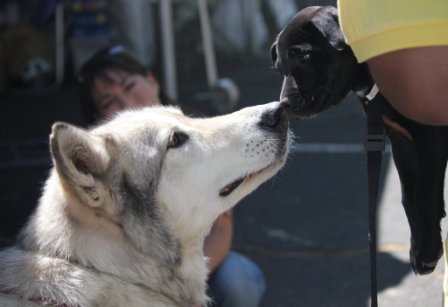 Hokshila and friend
+
Hokshila and friend
+
We
step into the pen of an excited wolf-dog named Dadyoe, who jumps on her
repeatedly, clawing at her clothes. Kaylan turns her back and kicks
dirt at him, signaling displeasure with her own “yip!” Dadyoe gets it,
and resignedly settles down.
Shelters often call on Kaylan to judge whether a dog might have wolf
genes. She takes one look and tells them whether it’s a case of low,
medium, or high wolf content. “Because I’ve done this all my life,” she
shrugs. With Dadyoe, the Albuquerque shelter didn’t know what they had,
and adopted him out to a family that couldn’t control him, and ended up
chaining him.
SHE POINTS TO another animal nervously pacing a neighboring enclosure,
alone. That’s wolf, she says admiringly. “Look—there’s no dog there.
She’s just gorgeous.” O-tai-oni is still learning to trust, more than a
year after she was picked up from an owner-surrender. Such animals can
never be released into the wild, Kaylan says, because once imprinted by
humans, they will always turn to them for food and comfort. Being
“imprinted,” however, does not mean socialized, she hastens to add. “I
have to socialize them.”
One way of doing that is to never let down your guard, no matter how
sad their histories or injuries. “I’m careful never to feel pity for
them,” she says, because pity is an expression of weakness that a clever
canine may be quick to exploit. Likewise, bursts of anger or impatience
signal a loss of control that let a dominant animal “play you like a
fiddle,” she says, shaking her head. “When I need to cry, I go in the
house.”
Dadyoe
and Bindi often accompany Kaylan to presentations at local schools and
the Open Space Visitor Center in Albuquerque, where she educates people
on proper canid socialization. Visitors are also welcome to come meet
the other animals, with advance notice and a donation, but the rescue is
closed to any more residents. What’s needed is $13,000 to acquire the
lot next door, which will expand on her one acre and allow the building
of visitor lodging and office space.
When people call, Kaylan immediately makes it clear that she is not
involved with wolves in the wild, a controversy that she steers clear of
as outside her expertise. “But I will say that nature exists in
balance, and if we don’t have wolves, watch out. It will be the demise
of humans.”
The scientist
"(Fear of wolves) goes beyond
the ability to understand it.
There's no basis for it at all, it's just an ingrained perception."
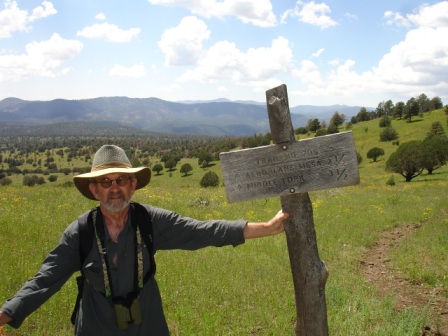 Dave Parsons headed the Southwest wolf recovery program.
+
Dave Parsons headed the Southwest wolf recovery program.
+
DAVID PARSONS was a young biologist who had as much experience with wolves as you’d expect, growing up in Iowa. His student research focused on birds. Climbing the career ladder at the U.S. Fish & Wildlife Service (FWS), he gravitated to whichever postings seemed most interesting.
As he tells it, one day he got a funding appeal in the mail from a nonprofi t group that wanted to force the government to fund a full-time Mexican wolf recovery program coordinator. He told his wife he was sending in $100, because he wanted that job!
Six months later, he had it.
“I was naive enough not to understand the politics,” he says now, white-haired and wise to the minefield he walked into 23 years ago. From 1990 to 1999, Parsons ran one of three federal programs mandated by the Endangered Species Act to save the Gray Wolf from extinction. His area of responsibility was the Mexican Gray Wolf, the most endangered of any in North America. By 1970, this subspecies had been hunted to extinction, with only about 50 animals left in breeding facilities. The plan was to rebuild a population of 100 wolves on national forest land in Arizona and New Mexico by 2006.
Three decades later, that population still stands at 75, though some 50 wolves have been found illegally shot, trapped, or dead.
In the Northern Rockies and Great Lakes, wolf recovery has been so successful that the animals are being hunted again, and the FWS is under intense pressure to remove Endangered Species protection. Parsons’ failed battle in the Southwest has thus turned him into a dogged advocate, one who still testifies at every government hearing.
At an FWS hearing in November, for example, hundreds of people packed a ballroom at the Embassy Suites hotel in Albuquerque to testify on proposed changes to federal wolf policy. Advocates for both sides lined the halls with tables and petitions, and three times the moderator had to warn the crowd to stop applauding and yelling as people spoke.
We caught up with Dave Parsons a few weeks later to get his take on the wildlife controversy that never seems to end.
Why is it the Mexican wolf pro- gram alone has not succeeded?
It’s mostly politics. But one primary difference is they had two places in the Northern Rockies that provided safe haven for wolves—Yellowstone National Park and the large wilderness areas in central Idaho. That allowed those wolves an easier start than our Mexican wolves.
Another key difference was the Mexican Gray Wolf recovery program relied on captive-raised wolves. In the Northern Rockies, they were an experienced population of wild wolves, same as in the Great Lakes. There wasn’t the controversy of putting them in.
The Mexican Gray Wolf was functionally extinct by 1940, meaning there was no documented breeding. That fi rst recovery team was faced with captive breeding from ten animals. It was not a full roadmap to recovery, but to prevent extinction.
If wolves are, as you and
other biologists say, critically important to the ecosystem, we should see conditions today that result from their long absence.
Here in the Southwest, we have the complication that our riparian forests were severely degraded by cattle and sheep brought here in huge numbers beginning in the 1800s. We had a jump start on all those effects, so you can’t tag it to the disappearance of wolves. In my talks I show a photo of Yellowstone in the mid-1900s, with the excess of elk and the lack of young trees. In the later photo you see the recovery of the willows (after wolves were put back). now the streams run clearer and cooler, which supports trout. The beavers are returning, and they build ponds that provide habitat for ducks and songbirds.
As far as the public is concerned, comments to the Fish & Wildlife Service seem to run 20 to 1 in favor of wolf recovery. Is the agency bound to consider public opinion?
Their decision is supposed to be based on science—the best science available. Most of what you see at these public hearings is of little value to the agency. The only comments of value are those that offer a substantive idea of how to do something differently. The rest is mostly for show. But the process creates a situation where both sides feel a need to show up and outshout each other.
This idea that top predators
are essential to the health of ecosystems, how established is it among scientists?
There are some papers out there that try to make the claim that there is no evidence of a direct effect (on the ecosystem from wolves). I haven’t seen a paper that really proves it. The preponderance of evidence supports the role of top predators—it’s an accepted theory, like evolution.
Since the Mexican wolf program is introducing the wolf to new areas, isn’t there bound to be a problem when a wolf shows up in a residential area, like Corrales?
I don’t think a wolf would come anywhere near Corrales, because there’s no suitable habitat nearby. Unlike coyotes, wolves don’t have plasticity in their diet, where they can eat everything from berries to midsize animals. Wolves evolved to eat large packages of meat, and their pack structure keeps them from going after small game. The goal has always been to establish wolves on public land, not private. You have to have a good steady supply of things like elk and deer. And public lands like the Gila and Apache national forests, where we introduced the wolves, turned out to be the best areas for that.
What about wolves that have been found killed—who is doing it, and why?
When I was running the program, poaching would peak during hunting season. There are more people in the woods with guns, and the opportunity to see wolves is increased. Plus there’s been a long tradition of shooting coyotes on sight, and the Mexican wolves can look like coyotes—at least, that’s everyone’s excuse who gets caught. Plus there’s widespread trapping in this state. Who knows what happens to a wolf found in a trap, especially one that doesn’t have a radio collar?
Why do you think hatred of wolves persists after all these centuries?
It’s a phenomenon that goes beyond the ability to understand it. There’s no basis for it at all, it’s just an ingrained perception.
There are odd parallels with Europe. For example, there are some 2,500 wolves in Romania, which is slightly smaller than New Mexico—but those people never experienced living without wolves, so the traditions are there, how you manage livestock. Here, we simply wiped out the predators and established ranching practices based on government- assisted predator control. There are proven ways to coexist with them. There are conservation groups working with ranchers to develop more predator-friendly practices.
Words in wolves' clothing
Although
wolf advocates claim
to rely on “pure science” in their advocacy, and
wolf opponents say they deal only in “the facts,” their press release
writers naturally borrow from the cultural arsenal
in crafting arguments
and funding appeals.
THE MOST persuasive images seem to draw from an ancient debate about Nature and the human place in it. On the one side you have nature as a potentially hostile force that must be conquered and tamed—that’s the wolf opponents. The opposing view pictures nature as a divine spirit to be accommodated and imitated.
The wolf has a role to play in either view, thanks to its kinship with our animal twin—the family dog. But in the wolf we see nature in its wild state, before taming. Is he then, like Rover, family oriented? Or is he a mangy cur that lacks the civilizing influence of humanity?
The Catholic Church has long used wolf imagery to depict the devil and sinners, owing partly to the horrifying sight of wolves feasting on the human victims of deadly plagues. That may be why the biblical trope “wolf in sheep’s clothing” resonates so strongly with rural Christian audiences. The phrase reminds us that human life is a constant struggle between good and evil, where it is difficult to choose the right path. The wolf symbolizes nature indifferent to human morality, serving only its appetites, not distinguishing between enemy and kin—a state where humans are always in danger of falling.
For wolf sympathizers, on the other hand, the animal represents lost innocence, the wild child before knowledge of good and evil. This wolf is “oppressed” and “persecuted,” denied his rightful share of the Earth’s bounty. He is our brother. He belongs.
Demonized or idolized, wolves are described according to what writers think they know, rather than personal experience. Their words have no relationship to the current reality of these pack animals who are now a shadow of their former multitude, heavily interbred with coyotes and dogs, and barely surviving in pockets of remaining wilderness.
* * *
“The
wolf is a remarkable species
that symbolizes all things natural, wild
and free. Wolves once reigned atop magnificent and diverse ecosystems
across North America, helping to maintain nature’s critical balance
on
this continent.”
Defenders" of Wildlife Campaign to Save America’s Wolves
* * *
“The
introduction of the Canadian Gray Wolf has resulted in repeated
infringement of our private property rights, invasion of our privacy,
created a constant threat to our livelihoods, safety and health of our
livestock, working or hunting dogs, and our families while jeopardizing
the viability of our businesses.”
Oregon Wolf Education
mission statement
* * *
“Few
animals evoke the wild like wolves. Majestic, rangy and highly social,
wolves play a crucial role in driving evolution and helping calibrate
nature’s complex relationships. ... Establishing wolf populations in
remaining habitat ... (would) allow wolves to play their valuable
ecological role in more of their former range.”
Center for Biological Diversity, Restoring the Gray Wolf
* * *
“Wolves
... pose a threat to livestock, family pets, other wildlife, and
humans. ... Indeed, many believe wolves were reintroduced as one of
several means being used to reduce beef production... It seems almost
inevitable the release of wolves will result in the violent, horrific
deaths and possible consumption of humans, most likely children.”
Defend Rural America
* * *
“Wolves in Government Clothing
is
a documentary film about predators
in the wild, and in government,
and how the Endangered Species Act (ESA ) has empowered both of them to
destroy people’s lives. Witness firsthand accounts from those who are
forced
to deal with wolves on a daily basis.... The reality is, if we
don’t control these predators…they will control us.”
Film by David Spady, financed by Americans for Prosperity
* * *
“[C]attlemen
are addicted to a culture of killing and having control over whatever
it is they want to destroy. It’s the same arrogance and brutality that
earlier destroyed Native American people and massacred native wildlife
throughout the continent.... Isn’t it about time this country truly
atoned for causing such brutal destruction to native people and native
wildlife...?”
The National Rally to Protect America’s Wolves, Our Mission
* * *
“The
United States of America has had a grand and noble history. We have
achieved unprecedented success in prosperity, in freedom and in
generosity ... Why is that? ... Three pillars have contributed to our
great successes. They are the pillar of faith in God, the pillar of the
free markets and the pillar of the Constitution of the United States of
America. All three
of those pillars are being attacked... Liberals are
the ones who are attacking those pillars. They are
the wolves in sheep's
clothing.”
Wolves in Sheep’s Clothing: Liberalism Formula for Failure
by Clark Jensen
(Elderberry Press, 2009)
